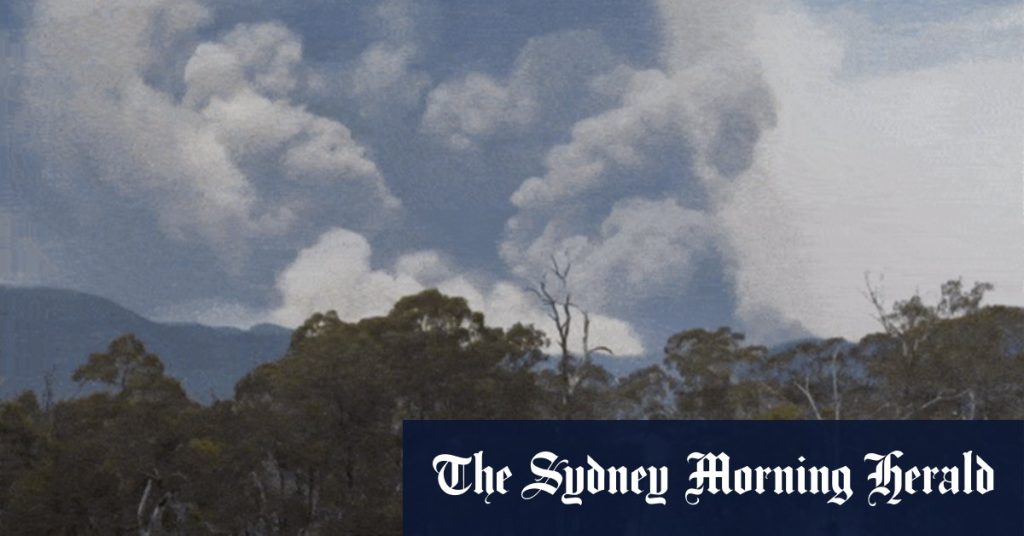Two separate fire incidents unfolded in Victoria, Australia, on Saturday, demanding the attention of emergency services and prompting community warnings. The first incident involved a blaze in Coburg North, which threatened nearby “recycled cars” and necessitated the deployment of multiple aerial firefighting units. Authorities issued an advice message for surrounding suburbs, including Coburg North, Fawkner, and Hadfield, urging residents to stay informed and take precautions.
The second, and more significant, incident was a bushfire raging in the Grampians National Park in western Victoria. This fire, ignited by a lightning strike earlier in the week, escalated dramatically on Friday due to warm temperatures and strong southern winds. The intensity of the fire created a massive smoke plume that drifted over Melbourne, hindering aerial firefighting efforts at times due to visibility and safety concerns. The fire’s behavior was described as “high-energy,” meaning its rapid spread and intense heat made direct firefighting extremely challenging.
Emergency services, led by Incident Controller Mark Gunning, held community meetings in Ararat, Stawell, and Pomonal to update residents on the fire’s progress and necessary precautions. Gunning emphasized the fire’s unpredictable nature and the significant challenge posed by the dry landscape, which fueled faster fire spread than models predicted. He highlighted the “vacuum cleaner” effect of the smoke plume, which, driven by upper-level winds, pulled the fire along with it. Residents of Pomonal and Lake Fyans were advised to prepare to leave their homes, while residents of Halls Gap received emergency alerts and police doorknocks urging them to evacuate.
Fire officials explained that two fronts of the Grampians fire were encroaching on Lake Bellfield, south of Halls Gap. One spot fire to the north was successfully suppressed through aerial water-bombing. While the immediate threat to Mafeking and Watgania was downgraded, residents were warned against returning as the area remained unsafe. Several other localities, including Jimmy Creek, Mirranatwa, Bornes Hill, Grampians, Victoria Valley, Barton, Jallukar, and Londonderry, remained under a “watch and act” warning.
The long-term forecast posed further concern, with temperatures expected to rise into the mid-30s by Christmas Day and potentially reach 36 degrees Celsius in Halls Gap on Boxing Day. This anticipated heatwave, coupled with the dry conditions, raised concerns about the fire’s continued spread. State Response Controller Garry Cook emphasized the need for proactive defense preparation, acknowledging the fire’s potential to burn for several weeks due to the dry, rugged, and inaccessible terrain. Relief centers were established in Ararat and Stawell to support displaced residents.
Gunning highlighted the cumulative effect of the past 24 months of low rainfall in the Grampians, creating an abundance of dry fuel for the fire. He warned of the possibility of “spike weather days,” where extreme conditions could propel the fire out of the dense bushland and into surrounding towns via rapidly spreading grass fires. While planned burns had created firebreaks and provided some defense, Gunning cautioned that these measures could be overwhelmed if a catastrophic fire danger rating eventuated in the coming month. He invoked the memory of the devastating 2006 Mount Lubra bushfire, which tragically claimed two lives and burned vast tracts of land, to underscore the potential speed and ferocity of fires under extreme conditions.
While planned burns continued on the fire’s southern flank to protect Dunkeld, authorities acknowledged the ongoing threat to Pomonal. Although a previous fire scar from February’s blaze provided some protection, the potential for the current fire to threaten the town in the coming days and weeks remained a concern. The combination of dry conditions, challenging terrain, and unfavorable weather forecasts presented a significant challenge to firefighting efforts, necessitating ongoing vigilance and community preparedness.

